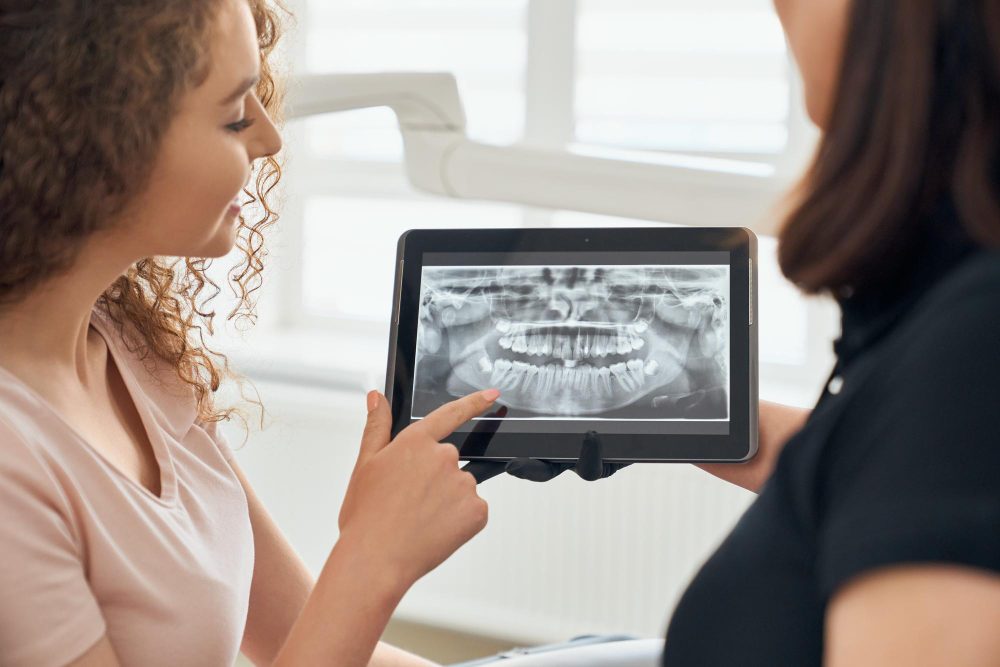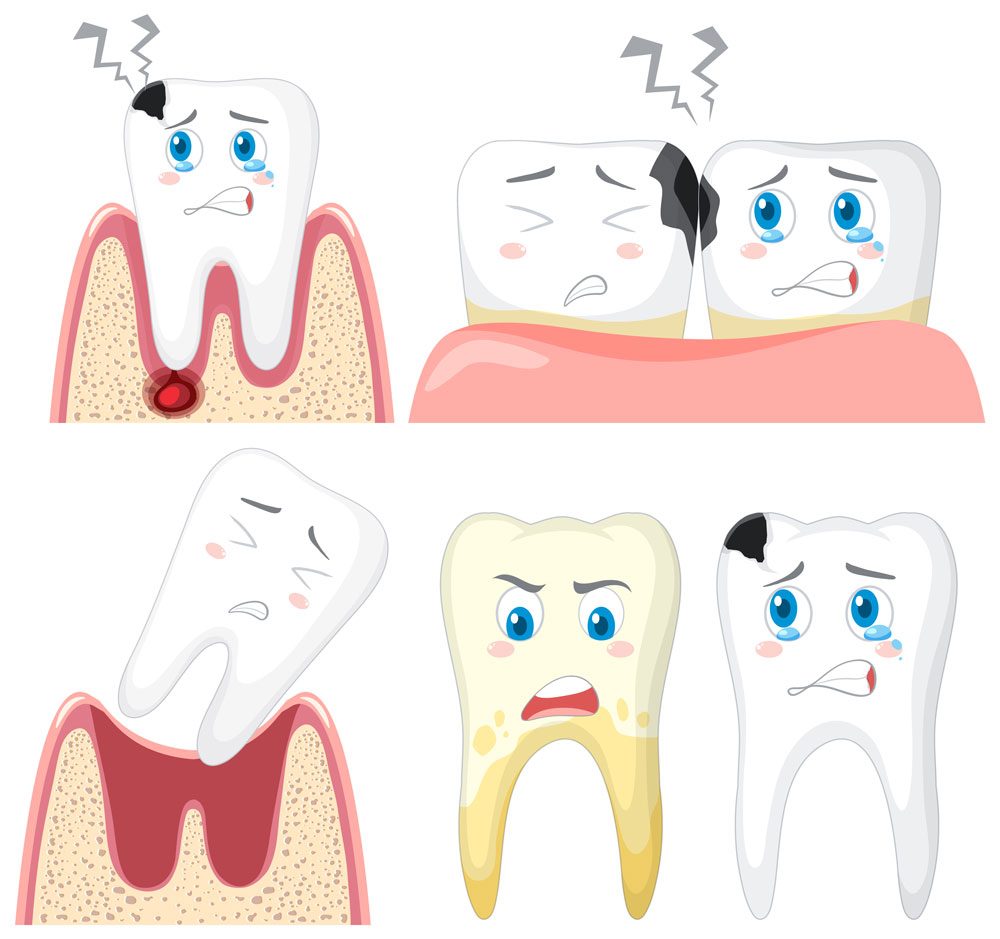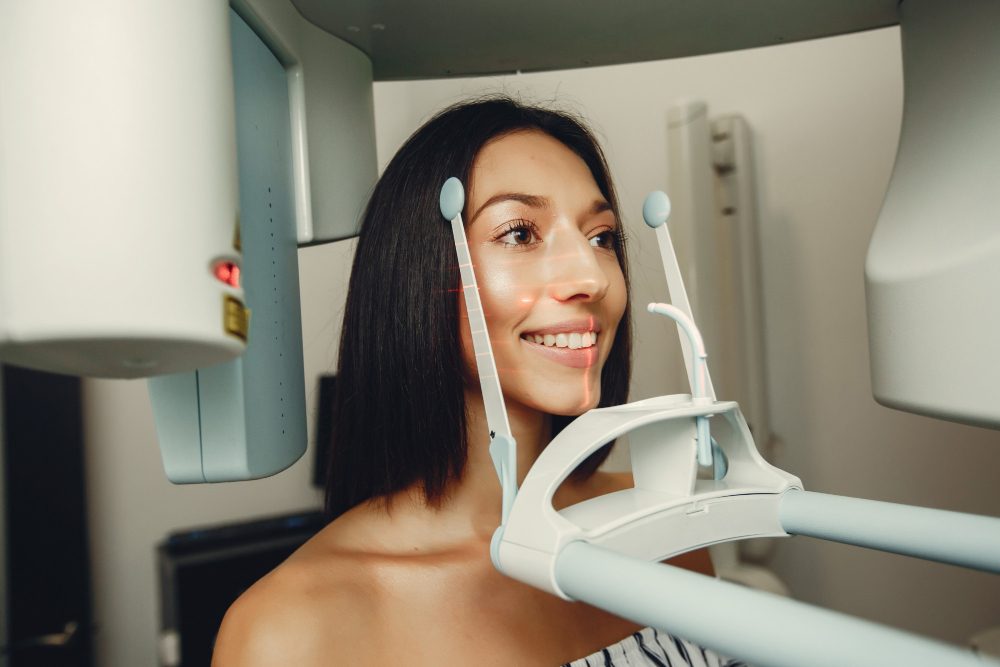Ask the Dentist: Why are Dental X-Rays important when visiting the dentist?

When it comes to maintaining good oral health, regular dental check-ups play a crucial role. For many patients, however, there’s often a sense of confusion or concern when their dentist recommends dental X-rays.
Common questions include: “Are dental X-rays safe? Are they really necessary? Or are they just an added cost?” The truth is, dental X-rays are an essential part of modern dentistry, far from being a “money grab.” In fact, they are a valuable diagnostic tool that helps dentists detect oral health issues early before they become more serious and expensive to treat.
You can’t expect your mechanic to fix your engine without first looking underneath the hood of the car to check what exact part of the car has a problem, you can’t expect your dentist to tell you if or what is wrong with your teeth without first having an x-ray taken to look underneath the surface of the tooth and bones.
In this article, we’ll explore the importance of dental X-rays, address common misconceptions, and explain why My Local Dentists includes them as part of your comprehensive oral care, treatment planning and emergency appointments.
What Are Dental X-Rays?
Dental X-rays, also known as radiographs, are images of your teeth, bones, and surrounding soft tissues. These images help dentists identify potential problems that are underneath the surface of the tooth or bones and not visible during a standard oral examination. Using a small amount of radiation, dental X-rays capture detailed pictures of the interior structures of your mouth, providing critical insights into your oral health.
There are several types of dental X-rays used in general dentistry:
- Bitewing X-rays – Capture the tooth structure of your upper and lower teeth simultaneously and are ideal for detecting decay between teeth.
- Periapical X-rays – Show the entire tooth, from crown to root, and are useful for diagnosing problems below the gum line or in the jawbone.
- Panoramic X-rays – Provide a broad view of the jaws, teeth, sinuses, and nasal area, typically used for assessing wisdom teeth or orthodontic treatment planning.
- Cephalometric X-rays – Provide a whole head x-ray of the jaws, teeth from a side view, and typically used for orthodontic treatment planning to assess jaw growth and jaw relationship
- Occlusal X-rays – Show the floor or roof of the mouth and are used to monitor the development and placement of teeth.
Why Are Dental X-Rays So Important?
1. Early Detection of Dental Issues
Many dental problems begin in areas that are difficult or impossible to see with the naked eye. Dental X-rays help detect:
- Cavities (tooth decay or holes) hidden between teeth or underneath the surface of the tooth
- Bone loss due to gum disease
- Dental calculus and tartar deposits
- Impacted teeth (like wisdom teeth)
- Cysts and tumours
- Infections at the root of the tooth
- Dental abscesses
Without X-rays, these issues may go unnoticed until they cause pain or require more complex and costly treatments.

2. Support Preventive Dentistry
Preventive care is at the core of modern dental clinics. We want to be proactive in preventing issues and managing them in the early stages so that the problems don’t become toothaches and bigger problems. By detecting problems early through X-rays, dentists can recommend treatments that prevent further damage. For instance, catching a small cavity early can prevent the need for a root canal or tooth extraction down the track. This aligns with Australia’s National Oral Health Plan, which promotes early intervention and prevention as key to improving oral health outcomes across the country (Australian Dental Association, 2020).
3. Essential for Children and Adolescents
Children and teenagers benefit significantly from dental X-rays as their mouths are still developing. X-rays help monitor the growth of their teeth, detect problems with eruption, and ensure there is enough space for permanent teeth. Timely interventions can help avoid orthodontic complications later on.
4. Aid in Treatment Planning
Whether it’s a dental implant, braces, wisdom tooth removal, or a root canal, X-rays are essential for planning and performing these procedures safely and effectively. Dentists rely on these images to assess the bone structure, locate nerves, and gauge the extent of decay or damage.
5. Monitoring Oral Health Over Time
Dental X-rays serve as a valuable record of your oral health. Comparing past and current X-rays allows your dentist to monitor changes, track healing after procedures, and detect any recurring issues.
Addressing Safety Concerns: Are Dental X-Rays Safe?
A common concern among patients is the safety of dental X-rays. The good news is that modern dental X-ray machines use extremely low levels of radiation—far less than what we’re exposed to in our daily environment, including sunlight, flying in an airplane, or using electronic devices. Did you know that you get 200 times more radiation exposure from flying on a plane from Sydney to Los Angeles than a small dental x-ray?
In Australia, dental practices follow strict guidelines set by the Australian Radiation Protection and Nuclear Safety Agency (ARPANSA) to ensure that radiation exposure is kept to an absolute minimum. Digital X-ray technology, now the standard in most clinics, further reduces radiation exposure by up to 90% compared to traditional film X-rays.
For added safety, protective measures such as lead aprons and thyroid collars are used during the procedure.
Dental X-rays can be taken safely during pregnancy when necessary, particularly in emergencies, however it is always important to let your dentist know if you are pregnant. The Australian Dental Association supports the careful use of X-rays during pregnancy when the benefits outweigh any minimal risk.
“Digital X-ray technology, now the standard in most clinics, further reduces radiation exposure by up to 90% compared to traditional film X-rays.”
Are Dental X-Rays Just a “Money Grab”?
Some patients may feel sceptical when told they need dental X-rays, especially if they are not experiencing any pain or visible problems. This has led to the perception that X-rays are an unnecessary expense. However, this couldn’t be further from the truth.
Dental X-rays are a preventive investment in your oral health. Skipping them can lead to undiagnosed conditions, which may require more invasive, time-consuming, and expensive treatments later. For example, a small cavity that could have been filled early and protective for the tooth might turn into a painful abscess requiring a root canal or even extraction.
Moreover, reputable Australian dental clinics follow ethical billing practices and only recommend X-rays when clinically necessary. If you’re unsure, always feel free to ask your dentist to explain why an X-ray is needed in your specific case.
How Often Should You Get Dental X-Rays?
The frequency of dental X-rays depends on your age, oral health, risk of disease, and history of dental problems. Here’s a general guide:
- New Patients: Often require a full set of X-rays to establish a baseline.
- Children: May need X-rays to monitor their rapid growth and changes to their baby and adult teeth
- Adults with good oral health: May only need X-rays every 1-2 years.
- Patients with ongoing issues or high risk: May require more frequent imaging.
Your dentist will tailor the frequency based on your individual needs, in line with evidence-based practices recommended by the Australian Dental Association and international standards.

Maximising the Value of Your Dental Visits
To ensure you’re getting the most out of your dental care:
- Ask questions about why X-rays are being recommended.
- Keep a record of your dental history and previous X-rays.
- Maintain regular check-ups to reduce the need for emergency treatments.
- Follow your dentist’s advice on oral hygiene, diet, and care between visits.
Remember, your dentist’s goal is to protect your smile, not empty your wallet.
Final Thoughts
Dental X-rays are a cornerstone of effective, preventative dentistry. They provide a clear window into parts of your mouth that cannot be examined otherwise, ensuring issues are detected early and treated appropriately. Far from being a “money grab,” they are a practical, cost-effective diagnostic tool that supports lifelong oral health.
If you’re visiting a dentist and they recommend dental X-rays, know that it’s for your benefit—not your dentist’s bottom line. With modern technology, stringent safety standards, and a focus on prevention, dental X-rays continue to be one of the most valuable tools in dentistry today.
So next time your dentist says, “Let’s take a quick X-ray” you’ll know they’re looking out for your future smile.
References:
- Australian Dental Association. (2020). National Oral Health Plan. https://www.ada.org.au/
- Australian Radiation Protection and Nuclear Safety Agency (ARPANSA). https://www.arpansa.gov.au
- Mayo Clinic. (2022). Dental X-rays: Overview. https://www.mayoclinic.org
- American Dental Association. (2023). Dental Radiographic Examinations: Recommendations for Patient Selection and Limiting Radiation Exposure.
If you’re due for a dental check-up or want to learn more about your oral health, contact My Local Dentists today. Your smile deserves the best care!
